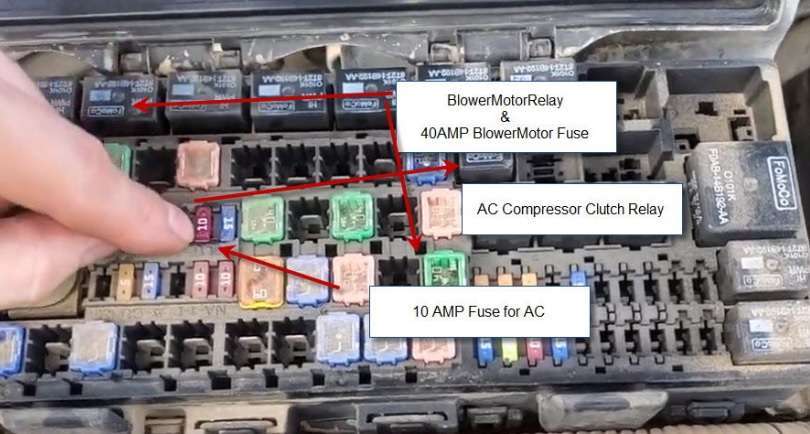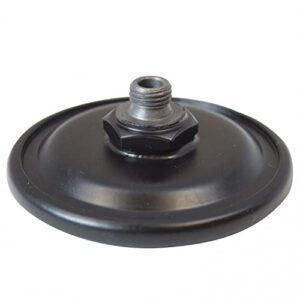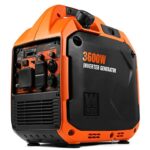Is your Ford F150’s air conditioning not working properly? Troubleshooting the issue can help you determine the cause and find a solution.
We will provide you with some tips and techniques to identify common problems with the air conditioning in your Ford F150, so you can enjoy cool and comfortable drives again.
Whether it’s a lack of cool air, strange noises, or a complete failure of the system, we’ll guide you through the steps to diagnose and fix the problem.
Table of Contents
By following these troubleshooting steps, you can save time and money by identifying and resolving the issue yourself.
So, let’s dive in and get your Ford F150’s air conditioning back to optimal performance.
Common Signs Of Air Conditioning Problems
Is your Ford F150’s air conditioning system acting up?
It’s important to troubleshoot any issues and get them fixed promptly to ensure a comfortable driving experience. Here are some common signs that indicate air conditioning problems in your vehicle:
Weak Or No Airflow
Insufficient airflow is often a sign of a clogged or blocked air filter. The air filter prevents dust and debris from entering the system, but over time it can get dirty and hinder the airflow. Here are some indicators of weak or no airflow:
- Reduced or weak air coming out of the vents
- No air at all or intermittent airflow
Strange Or Unpleasant Odors
Strange smells coming from your air conditioning system can be a cause for concern. These odors may indicate the presence of mold, mildew, or other contaminants within the system. Here are some examples of strange or unpleasant odors:
- Musty or moldy smell when the AC is turned on
- A foul odor resembling rotten eggs or a chemical smell
Inconsistent Cooling Performance
Inconsistent cooling performance can make your driving experience unpleasant, especially during hot summer months. If you notice inconsistent cooling in your Ford F150’s air conditioning system, it could be due to various reasons.
Here are some indicators of inconsistent cooling performance:
- The air conditioner takes longer to cool the cabin than usual
- The temperature of the air coming from the vents fluctuates
- The air conditioner blows cold air initially but then turns warm
Remember, these signs should not be ignored, as they may lead to bigger problems if left unaddressed.
If you experience any of these issues with your Ford F150’s air conditioning system, it’s recommended to take your vehicle to a professional mechanic or certified technician for proper diagnosis and repair.
Keep your summer drives cool and comfortable by addressing any air conditioning problems as soon as they arise.
Regular maintenance and inspection of your Ford F150’s air conditioning system can help prevent these issues and ensure optimal performance.
Your air conditioner plays a crucial role in providing a pleasant driving experience, so don’t hesitate to take action when you notice any signs of trouble.
Understanding The Components Of The Ford F150 Air Conditioning System
When troubleshooting the air conditioning system in your Ford F150, it’s essential to have a clear understanding of its components. This knowledge will help you identify and resolve any issues that may arise.
In this section, we will explore the compressor and refrigerant, examine the condenser and evaporator, and learn about the expansion valve and accumulator.

Exploring The Compressor And Refrigerant
- The compressor plays a crucial role in the air conditioning system as it is responsible for pressurizing and circulating the refrigerant.
- It is driven by a belt connected to the engine and acts as the heart of the system, ensuring proper cooling in your vehicle.
- The refrigerant, on the other hand, is a chemical compound that absorbs and releases heat as it goes through the air conditioning system.
- In the Ford F150, the most commonly used refrigerant is r134a.
Examining The Condenser And Evaporator
- The condenser is located in the front of your vehicle and acts as a heat exchanger, dissipating heat from the refrigerant and converting it into a liquid.
- When the refrigerant condenses, it releases heat, which is then expelled through the condenser fins.
- The evaporator, on the other hand, is located inside the vehicle and absorbs heat from the passenger compartment, cooling the air that is then circulated through the vents.
- It works by allowing the liquid refrigerant to evaporate, absorbing heat in the process.
Learning About The Expansion Valve And Accumulator
- The expansion valve is a crucial component that controls the flow of refrigerant into the evaporator.
- It regulates the amount of refrigerant entering the evaporator, ensuring optimal cooling efficiency.
- The accumulator, on the other hand, acts as a temporary storage and drying chamber for the refrigerant.
- It helps remove any moisture or impurities present in the system before the refrigerant is sent back to the compressor for circulation.
Understanding these components is essential when troubleshooting the air conditioning system in your Ford F150.
By having a good grasp of how each component works and their role in the overall system, you’ll be better equipped to diagnose and fix any issues that may arise.
Step-By-Step Guide To Ford F150 Air Conditioning Troubleshooting
Is your Ford F150’s air conditioning acting up?
Don’t worry, troubleshooting the issue yourself can save you time and money. In this step-by-step guide, we’ll walk you through the process of troubleshooting your Ford F150’s air conditioning system. Let’s get started!
Checking The Basics: Fuses And Relays
- Begin by inspecting the fuses and relays related to the air conditioning system.
- Locate the fuse box and look for any blown fuses or faulty relays.
- Replace any blown fuses or faulty relays with new ones.
- Ensure the fuses and relays are securely installed.
- Check if this resolves the issue before moving on to the next step.
Assessing The Refrigerant Levels
- Start by locating the low-pressure port on the air conditioning system.
- Connect a pressure gauge to the low-pressure port and check the refrigerant levels.
- If the refrigerant levels are low, it may indicate a leak in the system.
- In such cases, it is recommended to have a professional inspect and repair the leak.
- Recharge the refrigerant to the recommended levels if no leak is detected.
Inspecting The Compressor Clutch
- Locate the compressor clutch under the hood of your Ford F150.
- Start the engine and turn on the air conditioning.
- Observe if the compressor clutch engages and disengages properly.
- If the clutch does not engage, it may indicate a faulty compressor clutch or a wiring issue.
- Have a professional inspect and repair the compressor clutch or wiring if needed.
Testing The Pressure Switches
- Locate the pressure switches on the air conditioning system.
- Use a multimeter to test the continuity and functionality of the switches.
- The switches should close when the pressure is within the normal operating range.
- If a switch does not close or open as expected, it may indicate a faulty switch that needs replacement.
Examining Electrical Connections
- Inspect all electrical connections related to the air conditioning system.
- Ensure all connections are clean, tight, and free from corrosion.
- Tighten any loose connections and clean any corroded terminals.
- Faulty or loose connections can disrupt the proper functioning of the air conditioning system.
Analyzing The Air Conditioning Control Module
- Locate the air conditioning control module in your Ford F150.
- Inspect the module for any visible signs of damage or corrosion.
- Check if any error codes are displayed on the module.
- If needed, reset the module and see if it resolves the issue.
- For complex issues, consult a professional for further diagnosis and repair.
By following this step-by-step guide, you can troubleshoot the air conditioning issues in your Ford F150 effectively.
Remember to prioritize safety and consult a professional if you’re unsure or unable to resolve the problem on your own. Stay cool and enjoy the ride!
Addressing Specific Ford F150 Air Conditioning Issues
Is your Ford F150’s air conditioning system giving you trouble? Don’t sweat it! In this section, we’ll discuss some common issues that can arise with the air conditioning in your Ford F150 and how to troubleshoot and fix them. Take a look at the following key points:
Troubleshooting A Frozen Evaporator Coil:
A frozen evaporator coil can restrict airflow, leading to poor cooling performance. To troubleshoot this issue, follow these steps:
- Turn off the air conditioning and let the system thaw.
- Inspect the air filter and replace it if needed.
- Ensure that all vents and registers are open and unobstructed.
- Check the refrigerant levels and refill if necessary.
- If the problem persists, consider contacting a professional technician for further diagnosis and repair.
Fixing A Leaking Air Conditioning System:
A leaking air conditioning system can not only affect the cooling performance but also cause potential damage to other components. Here’s what you can do to fix it:
- Inspect the refrigerant lines and connections for any visible signs of leakage.
- If a leak is detected, repair or replace the affected part.
- Make sure all fittings and seals are properly tightened.
- Consider adding a leak detection dye to the system for easier identification of future leaks.
- If you’re unsure or uncomfortable with diy repairs, it’s advisable to seek assistance from a professional mechanic.
Resolving Issues With The Blower Motor:
Problems with the blower motor can result in inadequate airflow or no airflow at all. Follow these steps to address this issue:
- Check the fuse related to the blower motor and replace if necessary.
- Inspect the fan relay and resistor for any signs of damage.
- Ensure the blower motor is getting power by testing the connector with a multimeter.
- If the blower motor is faulty, consider replacing it with a new one.
- Seek professional help if you’re not confident in diagnosing or fixing the blower motor problem.
Dealing With A Malfunctioning Thermostat:
A malfunctioning thermostat can cause erratic cooling or no cooling at all in your Ford F150. Here’s what you can do to resolve this issue:
- Check the thermostat settings to ensure it’s set to the desired temperature and cooling mode.
- Test the thermostat by adjusting the temperature settings and observing the system’s response.
- Check the electrical connections and wiring related to the thermostat for any signs of damage.
- If the thermostat is faulty, consider replacing it with a new one.
- If you’re unsure about dealing with the thermostat, it’s best to consult an experienced technician.
Remember, while these troubleshooting tips can help in many cases, it’s always recommended to consult a professional if you’re unsure or if the issue persists.
Keeping your Ford F150’s air conditioning system in top shape will ensure a comfortable driving experience, especially during hot summer days.
DIY Solutions For Ford F150 Air Conditioning Problems
Is your Ford F150 experiencing air conditioning issues?
Don’t worry, there are some simple DIY solutions you can try before heading to the dealership. In this section, we’ll discuss three common problems and how you can address them yourself.
Cleaning Or Replacing The Air Filters
Over time, air filters in your Ford F150 can accumulate dirt and debris, impeding the flow of air. Here’s what you can do:
- Remove the old air filters from your vehicle.
- Clean them using compressed air or tap them gently to remove dust.
- If cleaning doesn’t work, replace the filters with new ones.
- Regularly clean or replace air filters to maintain optimal airflow.
How To Recharge The Refrigerant
If your air conditioning system is blowing warm air, a refrigerant recharge may be necessary. Here’s a step-by-step guide:
- Locate the low-pressure port in the air conditioning system.
- Attach the refrigerant recharge kit to the port.
- Start the engine and turn the air conditioning to the maximum setting.
- Follow the instructions on the recharge kit to add the correct amount of refrigerant.
- Be cautious not to overcharge the system as it can lead to further problems.
Repairing Or Replacing Faulty Components
Faulty components, such as the condenser or compressor, can cause issues with your air conditioning system. Here’s what you can do:
- Perform a visual inspection to identify any visible damage.
- If you notice leaks or signs of wear and tear, consider taking your vehicle to a professional for repairs.
- In case of minor issues like loose connections, you can tighten them yourself.
- If replacement is necessary, consult the vehicle manual or seek professional assistance.
Proper Maintenance To Prevent Future Issues
Regular maintenance is key to avoiding air conditioning problems in the future. Here are some maintenance tips:
- Keep the air conditioning system clean by wiping dust and debris from the exterior regularly.
- Test your air conditioning system periodically to ensure it’s functioning properly.
- Replace air filters according to the manufacturer’s recommendations.
- Schedule regular inspections with a qualified technician to catch any potential issues early.
Remember, while these DIY solutions can often resolve minor air conditioning problems, more complex issues may require professional expertise.
By following these steps and maintaining your vehicle regularly, you can enjoy a comfortably cool ride in your Ford F150.
When To Seek Professional Help For Ford F150 Air Conditioning Troubleshooting
If you’re having trouble with your Ford F150’s air conditioning system, there are times when it’s best to seek professional help.
While some issues can be tackled on your own, certain situations require the expertise of an automotive air conditioning specialist.
Here are some key points to consider:
Identifying Situations Beyond Your Expertise
- If you’ve attempted basic troubleshooting steps, such as checking the fuses or cleaning the air filter, and the problem persists, it may be time to call in a professional.
- When you’re unable to identify the root cause of the issue or lack the necessary tools and equipment to perform more complex repairs, it’s best to leave it to the experts.
- Electrical problems, refrigerant leaks, or major component failures are often beyond the skill level of the average diyer and should be addressed by a trained technician.
Finding A Reputable Automotive Air Conditioning Specialist
- Research and seek recommendations from trustworthy sources, such as friends, family, or online reviews, to find a reputable automotive air conditioning specialist.
- Look for certifications like ASE (automotive service excellence) and ensure the technician is experienced in working on Ford F150 air conditioning systems.
- Choose a service center that specializes in air conditioning repairs and has a track record of customer satisfaction.
Understanding The Costs Involved With Professional Repairs
- Professional repairs may cost more than attempting DIY fixes, but they often provide more reliable results and save you time and frustration in the long run.
- The cost of repairs can vary depending on factors such as the complexity of the issue, labor rates, and the need for replacement parts.
- It’s wise to request an estimate from the air conditioning specialist before giving the go-ahead for any repairs to avoid unexpected expenses.
Remember, while DIY troubleshooting can save you money in some cases, there are instances where professional help is essential.
By knowing when to seek assistance, finding a reputable specialist, and understanding the costs involved, you can ensure your Ford F150’s air conditioning system receives the expert attention it needs to keep you cool and comfortable on the road.
Tips For Preventing Ford F150 Air Conditioning Problems
Regularly inspecting and cleaning the condenser:
The condenser plays a crucial role in the functioning of your Ford F150’s air conditioning system. Regularly inspecting and cleaning it can help prevent air conditioning problems. Here are some key points to keep in mind:
- Inspect the condenser for any signs of damage or clogs.
- Clean the condenser using a soft brush or compressed air to remove any dirt or debris.
- Ensure that the condenser is free from any obstructions such as leaves or insects.
Keeping the vents and air filters free from obstructions:
Obstructed vents and air filters can hinder the airflow within your Ford F150’s air conditioning system and lead to cooling issues. Follow these tips to prevent obstructions:
- Regularly inspect and clean the vents to remove any dust or debris.
- Replace the air filters at recommended intervals to maintain proper airflow.
- Ensure that there are no objects blocking the vents, such as loose papers or items placed on them.
Using the air conditioning system regularly:
Regular use of the air conditioning system can help prevent problems as it keeps the components well-lubricated and prevents the buildup of mold or mildew. Consider the following:
- Even during colder months, run the air conditioning system for a few minutes every month to keep it in good working condition.
- Switch between different cooling modes periodically to ensure all functions are working properly.
- If the air conditioning system is not used for an extended period, have it inspected before using it again.
Avoiding extreme temperature changes:
Extreme temperature changes can put additional strain on your Ford F150’s air conditioning system, leading to potential problems. Follow these guidelines to avoid unnecessary stress on the system:
- Gradually adjust the temperature settings rather than making sudden changes.
- Park your vehicle in shaded areas or use window shades to minimize heat buildup inside the cabin.
- Avoid turning the air conditioning system to its coldest setting immediately after starting the vehicle.
Remember, taking preventive measures is crucial for keeping your Ford F150’s air conditioning system running smoothly.
By regularly inspecting and cleaning the condenser, keeping the vents and air filters free from obstructions, using the system regularly, and avoiding extreme temperature changes, you can greatly reduce the likelihood of air conditioning problems.
Stay proactive and enjoy a comfortable driving experience all year round.
Frequently Asked Questions
Q: Why Is My Ford F150’s Air Conditioning Not Cooling?
A: if your Ford F150’s air conditioning is not cooling, it could be due to a refrigerant leak, a faulty compressor, or a clogged air filter.
Q: How Can I Troubleshoot My Ford F150’s AC blowing Hot Air?
A: to troubleshoot your Ford F150’s AC blowing hot air, check the refrigerant levels, clean or replace the air filter, and ensure the compressor is functioning properly.
Q: What Should I Do If My Ford F150’s AC is Making Strange Noises?
A: If your Ford F150’s AC is making strange noises, it might indicate a problem with the compressor, fan motor, or belts. Have it inspected by a professional.
Q: Why Does My Ford F150’s Ac Have A Strange Odor?
A: a strange odor from your Ford F150’s AC could indicate mold or bacteria growth in the air conditioning system. Check and clean the evaporator and ventilation system.
Q: How Often Should I Service My Ford F150’s Air Conditioning System?
A: it is recommended to service your Ford F150’s air conditioning system every two years to ensure optimal performance and prevent potential issues.
Q: Can I Troubleshoot My Ford F150’s Ac Problems Myself?
A: while basic troubleshooting like checking fuses and air filters can be done by yourself, it is advisable to seek professional help for more complex ac problems in your ford f150.
Conclusion
Troubleshooting air conditioning issues in your Ford F150 can be a frustrating experience.
However, by following the steps outlined in this blog post, you can effectively diagnose and resolve these problems. Start by checking the basic components such as the fuse, relay, and compressor clutch.
If these are functioning properly, move on to examining the refrigerant levels and potential leaks.
Clean or replace the cabin air filter if necessary. It’s also important to consider external factors such as ambient temperature and vehicle usage.
Regular maintenance and seeking professional help when needed can save you time and money in the long run.
By staying proactive and addressing air conditioning problems promptly, you can ensure a comfortable and enjoyable driving experience in your Ford F150.








